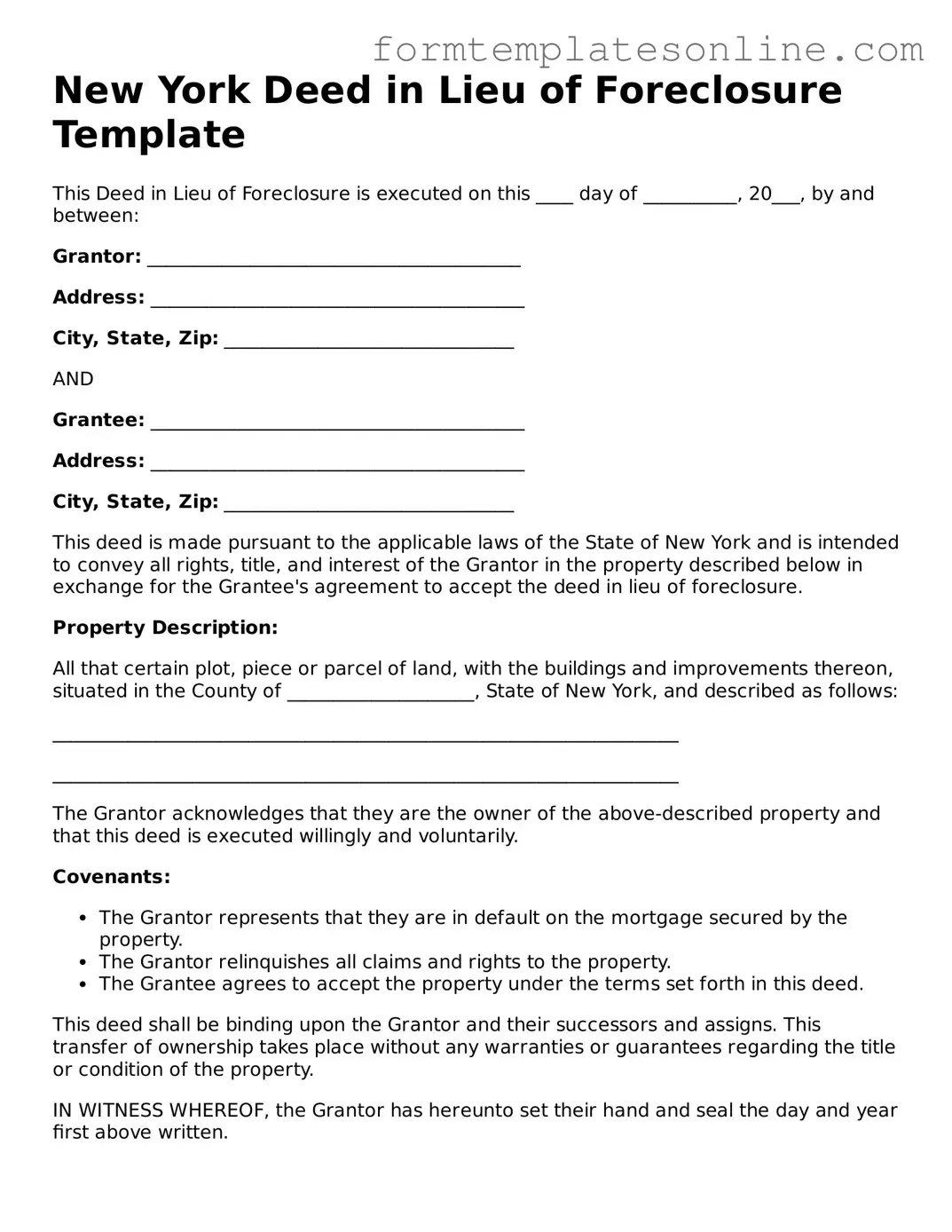New York Deed in Lieu of Foreclosure Template
This Deed in Lieu of Foreclosure is executed on this ____ day of __________, 20___, by and between:
Grantor: ________________________________________
Address: ________________________________________
City, State, Zip: _______________________________
AND
Grantee: ________________________________________
Address: ________________________________________
City, State, Zip: _______________________________
This deed is made pursuant to the applicable laws of the State of New York and is intended to convey all rights, title, and interest of the Grantor in the property described below in exchange for the Grantee's agreement to accept the deed in lieu of foreclosure.
Property Description:
All that certain plot, piece or parcel of land, with the buildings and improvements thereon, situated in the County of ____________________, State of New York, and described as follows:
___________________________________________________________________
___________________________________________________________________
The Grantor acknowledges that they are the owner of the above-described property and that this deed is executed willingly and voluntarily.
Covenants:
- The Grantor represents that they are in default on the mortgage secured by the property.
- The Grantor relinquishes all claims and rights to the property.
- The Grantee agrees to accept the property under the terms set forth in this deed.
This deed shall be binding upon the Grantor and their successors and assigns. This transfer of ownership takes place without any warranties or guarantees regarding the title or condition of the property.
IN WITNESS WHEREOF, the Grantor has hereunto set their hand and seal the day and year first above written.
__________________________
Signature of Grantor
__________________________
Name of Grantor
__________________________
Witness Signature
__________________________
Witness Name
State of New York
County of ____________________
On the ____ day of __________, 20___, before me, the undersigned, a Notary Public in and for the State of New York, personally appeared ______________________, known to me to be the person whose name is subscribed to this instrument and acknowledged that they executed the same.
__________________________
Notary Public Signature
My commission expires: ________________
